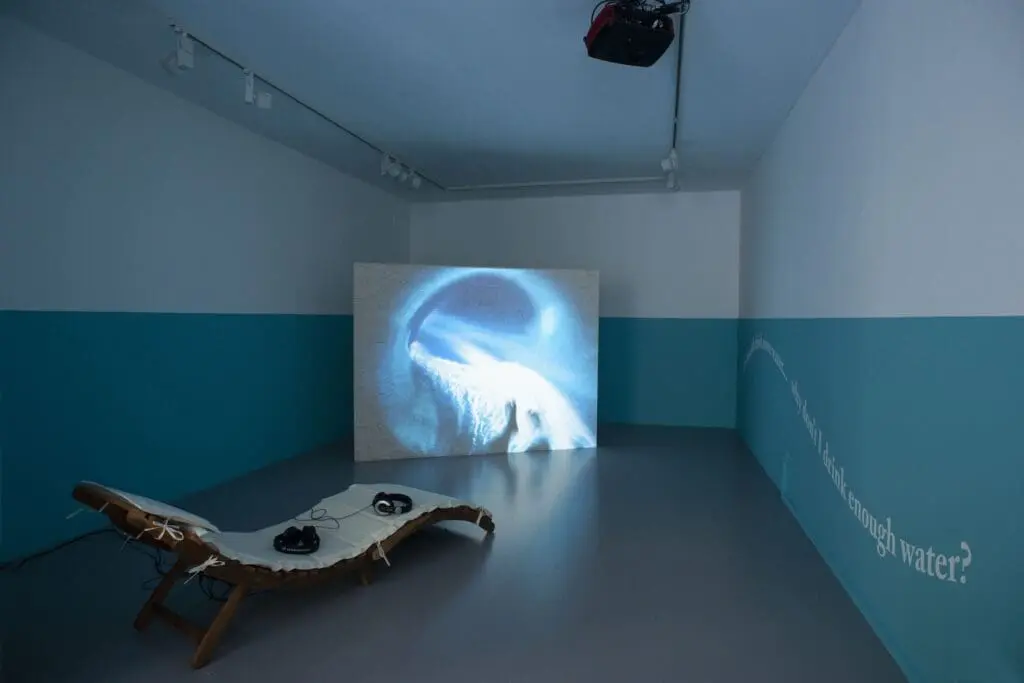

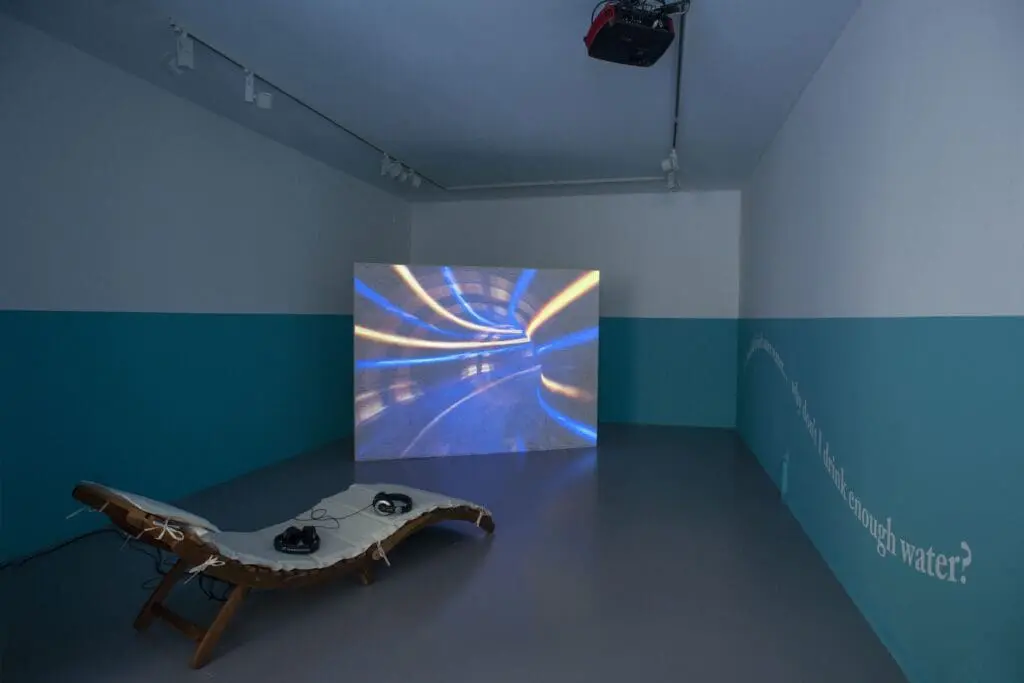
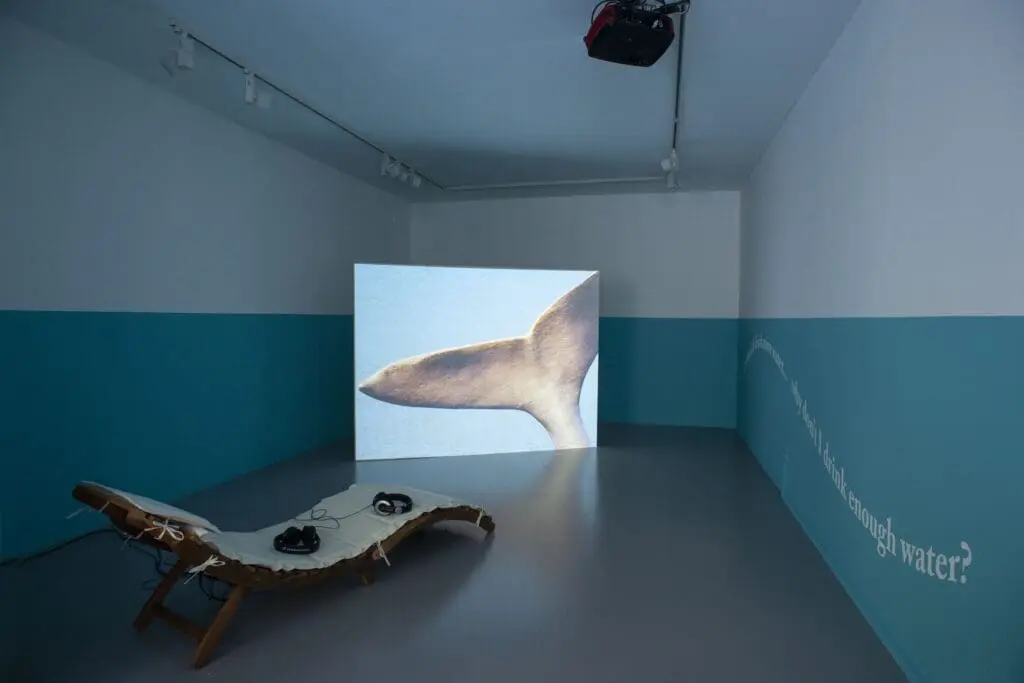
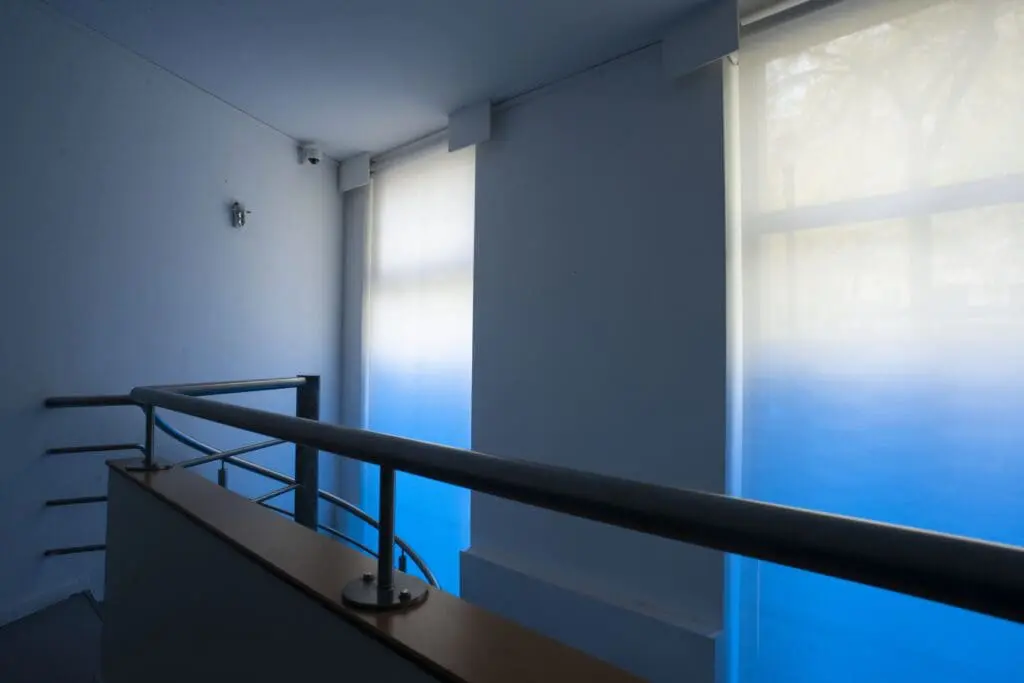
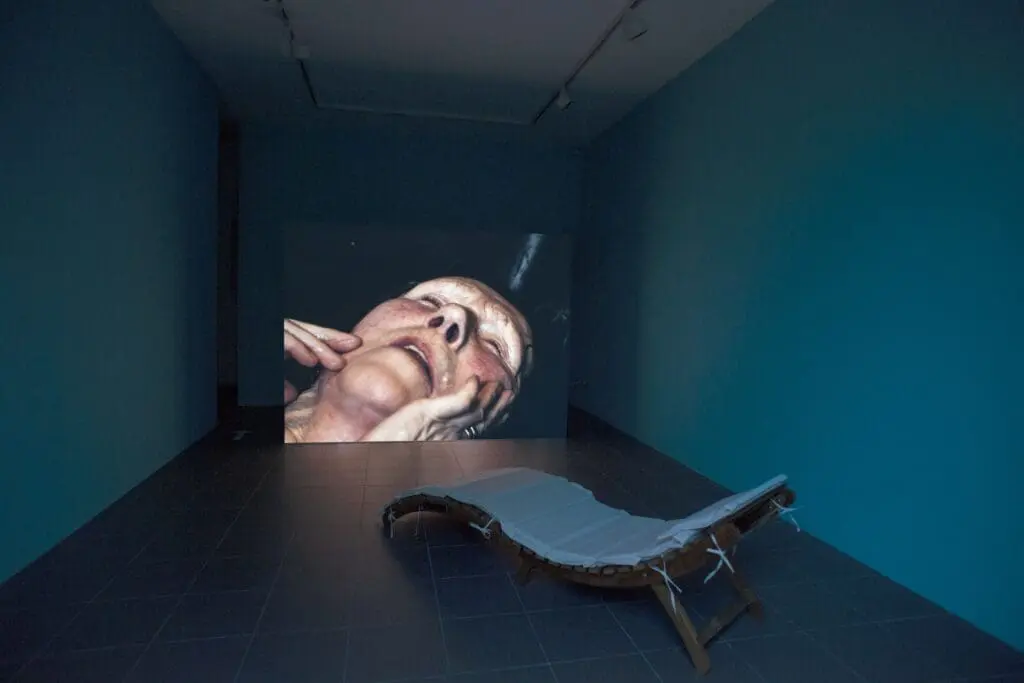

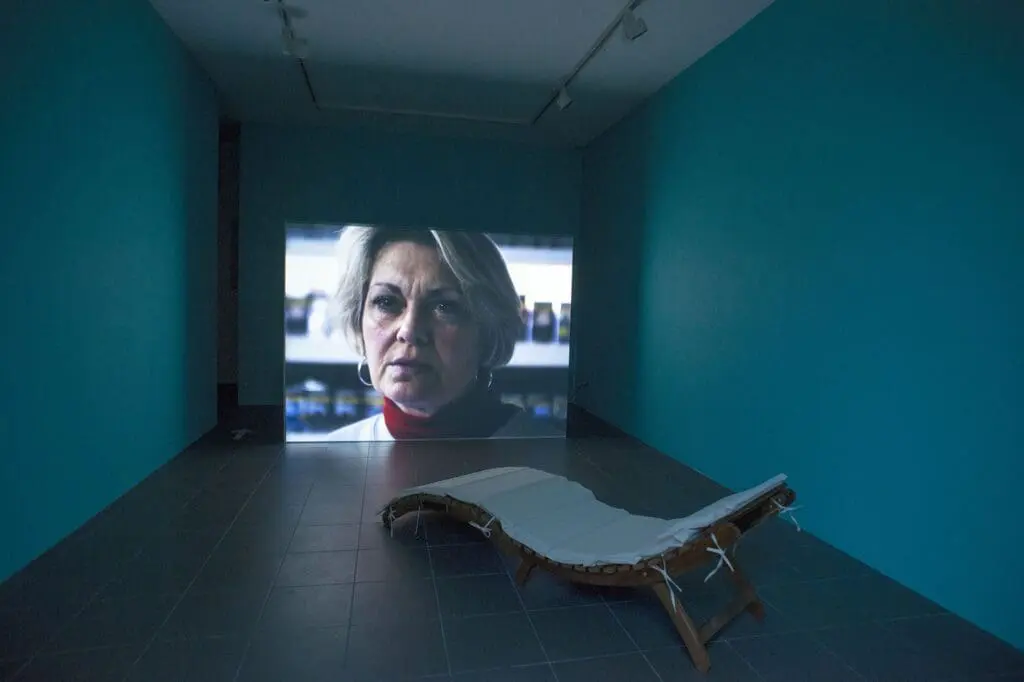

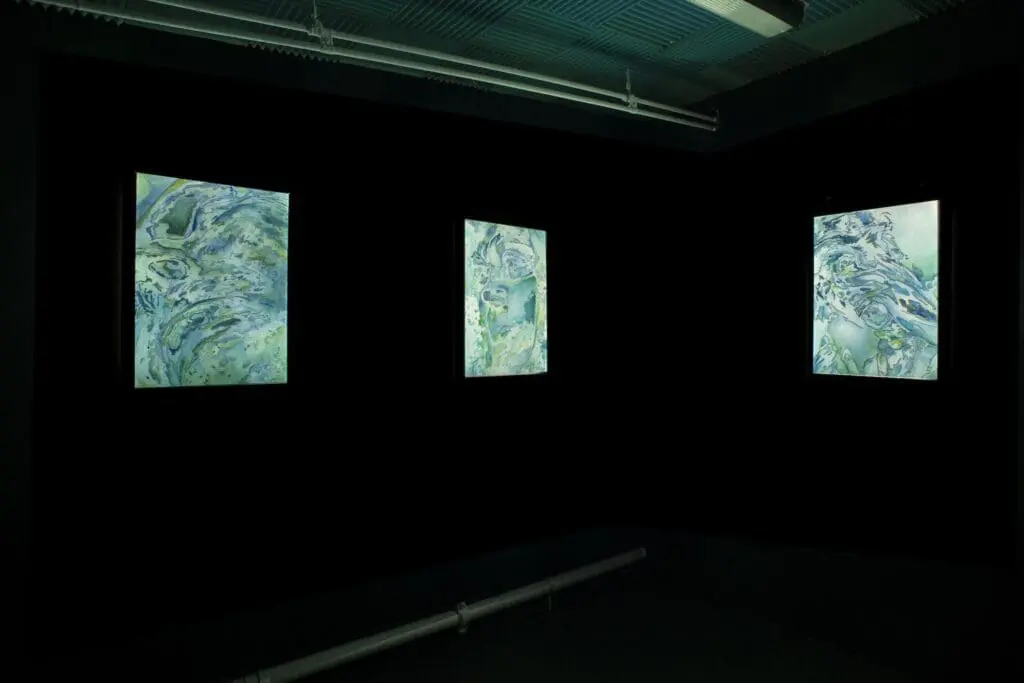
Solo exhibition
CENTRALE for contemporary art
Is falling an act of surrender or an accident, a collapse or a stumble? In Deeply, Madly, an installation at CENTRALE, Helen Anna Flanagan explores the breadth of the concept of “falling” without ever attempting to pin it down with a definitive explanation. The highlights of the installation are two audiovisual works—one on the top floor of the space, the other below.
Both video works are viewed from a custom deck chair—fittingly so, given the many scenes of water presented. Yet the starting point of this exhibition doesn’t seem to be water at all, but rather the irrational fear of Sheila, a middle-aged woman, of being pushed onto the metro tracks. In the upper installation, that fear becomes tangible: the repetitive images and sounds of escalators, flickering advertising screens, and the coming and going of metro trains feel as inescapable as obsessive thoughts.
But I also hear Sheila’s voice. She tries to explain her phobia and reassure herself. She does so by recalling a night in Corfu, by a swimming pool—the indescribable feeling of freedom that came with a free fall into the water after her husband pushed her. I see bodycam footage of someone rushing down a water slide. Still claustrophobic, but less threatening than the huffing and pumping of the earlier metro images. Finally, a projection of a whale’s tail—an animal launching itself only to let its majestic body fall.
Falling as a deliberate act, a natural phenomenon, a symbol of absolute freedom—the images are poetic in their simplicity. Particularly beautiful is the moment when the wood grain of the projection panel becomes visible in the almost glowing tail of the whale. It gives a rippling effect, as if I were watching a projection on water.
“I don’t drink enough water”—it’s written on the wall, and Sheila says it out loud. Our body is water, just like the artwork, as evidenced by the watercolors Flanagan has tried her hand at for the first time. In the film on the lower level, water is again a recurring element. A river flows, a foot bath bubbles, Buster Keaton gets soaked by a water tank above a locomotive, and a keychain bears The Great Wave off Kanagawa.
Panta rhei, then—everything flows, everything is in motion, not least the human being. It’s not a new insight, but Flanagan approaches it with a fresh, associative visual language. In the lower-level film, we meet Sheila as a clerk in a night shop, an apparently eternal observer, watching her clientele come and go through automatic doors—doors that resemble those of a metro car. The customers behave oddly, sometimes even comically, because they’re in love or obsessed with a song. Falling in love, falling into something: although Flanagan has chosen a less language-focused approach for Deeply, Madly than in her earlier work, the installation is clearly created from the perspective of an English speaker—so non-English speakers may miss out on some nuances.
Still, the images often speak for themselves. A shot of wrinkled apples on a shelf in the night shop—reminiscent of a vanitas still life—illustrates this beautifully. It resonates with the image of an elderly woman floating in a bathtub: lived-in, parchment-like skin in an almost fetal, weightless state. Our fluidity, the continuous transition from one state to another—perhaps that’s what defines us as humans.
The film itself is also in a constant state of adaptation. When I visited the installation, I mainly saw winter scenes. Flanagan is currently working on new material, including poolside shots in summery light, which will be added to the film at a later stage for a new presentation in September.
“Just go with the flow, man,” one of Sheila’s customers says, before we see an image of a mighty river that Sheila gazes out over, holding back her tears. Nothing is forever.
Text by Esther De Soomer
Collaboration:
Curator: Tania Nasielski
Mondriaan Fonds, Federatie Wallonië-Brussel